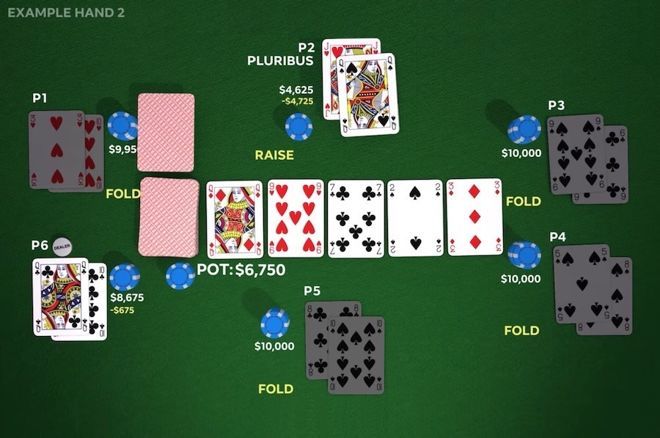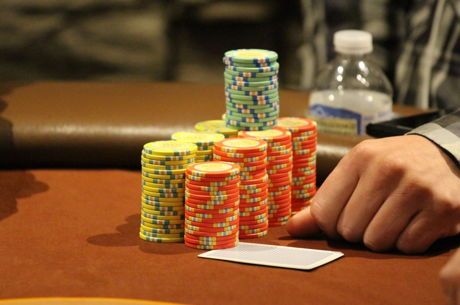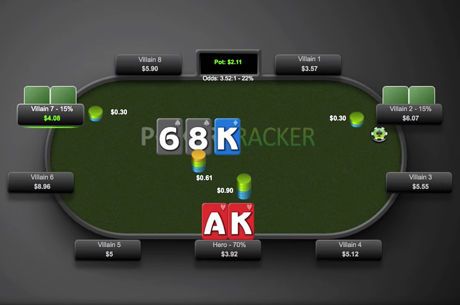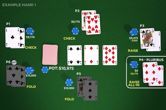Thinking About Lines Used by Pluribus the Poker Bot, Part 2

A week later, Skynet hasn't sent a wave of machines to wipe out mankind's collective bankroll.
No, the poker world is still solvent and still ticking along for the moment despite the announced presence of a cheap, masterful computer that demolished top human players in six-max no-limit hold'em.
The bots haven't arrived in force to bust everyone yet �� that we know of, anyway. But it's still instructive to look over some of the hands Pluribus, the bot in question, played in its successful sessions. Perhaps we can learn some interesting new concept, or at least add one more move to our arsenals by seeing what the bot did to empty the pocket of its opponents.
Last week, we examined the first hand in the highlight tape released by Pluribus' creators. Today, we'll look over the next one.
Hand #2: Pluribus Check-Raises River Large With Top Pair, Third Kicker
Hand Details
Action folded to the button, where a player raised to $250 with Q?10?. Dealt Q?J? in the big blind, Pluribus elected to defend with a call.
On the Q?9?7? flop, Pluribus checked and called a bet of $400. Pluribus then checked the 2? turn and the opponent on the button checked back.
The river brought a 3? and Pluribus checked a final time. The player on the button bet $675. Pluribus put in a huge raise to $4,725 and the opponent on the button called.
Thoughts and Possible Implications
Watching this hand is downright eerie. It feels like Pluribus knows exactly what the opponent's hole cards are, and seems to squeeze every last penny out of him or her. If there's one hand in this little three-hand video that's downright terrifying, it's this one.
Preflop, Pluribus makes a standard defend at 100 big blinds with queen-jack offsuit and flops top pair on a middling board. It chooses a sensible check-call line and the board bricks out after a check back on the turn.
At this point, Pluribus' creators correctly assess that most human players would bet. Given the action, it's exceedingly likely that a pair of queens is the best hand here, so betting for value is the standard line. You're hoping to get called by a weaker queen, a pocket pair or flopped pair, or maybe even ace-high. None of these likely combos improved to beat QxJx aside from pocket threes and twos. These hands may check the flop, anyway.
Against some very aggressive opponents, checking the river to induce can be a more profitable play than betting. Certain players are much more likely to bet thinly themselves than they are to call a bet. Still, facing this action, most players holding queen-jack are only going to call a final bet unless it's perhaps very small.
Indeed, after Pluribus checks, the opponent bets half the size of the pot. Instead of calling, though, Pluribus fires in a monster check-raise to $4,725. This is definitely where the hand strays far from standard.
Now, overbets have become a popular and effective weapon in recent years. If you can successfully come with a balanced range, it can mean more folds from opponents getting a worse price versus your bluffs and bigger payoffs the times you're called and have it. Players like Sam Greenwood have used this strategy to great effect.
However, as the video narrator correctly notes, overbets are very often indicative of polarized ranges, situations in which the player has mostly very strong and very weak hands.
That's not the case here with Pluribus, rocking just one pair of queens with third kicker. So, what drives Pluribus to make this curious play?
Well, think about what sort of range Pluribus is facing. As we already established, a pair of queens is very likely to be the best hand in this spot. Furthermore, it's likely the opponent has something �� most players will continue betting with a large number of their bluffs on the turn in hopes of folding out the weakest parts of the opponent's flop calling range.
Checking back indicates the player on the button indeed has some middling showdown value, likely a pair, or a decent draw with which he or she doesn't want to face a check-raise.
The opponent in this hand may use these middling hands to go for a thin value bet on the river after the board bricks out. A check-raise in this spot seems to be a pretty savvy play, but even the rare player who goes for this line is unlikely to make it quite this big. Pluribus raises more than double the size of the pot, giving its opponent a pretty poor price to call �� $4,050 more into a pot of $6,750.
The player on the button has to be right nearly 40 percent of the time to make this call profitably. That's a big ask with the one-pair hand that he or she looks to be holding.
Furthermore, the price allows Pluribus to get away with many bluffs, check-raising some missed draws and possibly the occasional weak pair.
Will this sometimes backfire if Pluribus is called by a stronger hand that checked back the turn? It definitely could, and that would be the way to combat this, by making sure to mix in some strong checks on the turn to remain balanced. Something like queens up would seem to be a good candidate for such a play as the opponent checking up front is very likely to have little or no equity, meaning a free card doesn't hurt as much.
In any case, it's hard to imagine this line becoming the norm. Most players are risk-averse, and this is taking a large amount at risk with a decidedly mediocre hand. The board also has to run out perfect with two total bricks for the big blind to comfortably attempt this.
However, it's worth considering in the right spot and could add a significant amount, as Pluribus likely won several thousand dollars more in this hand than any human player would have.









